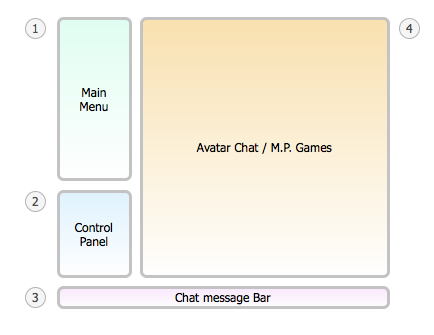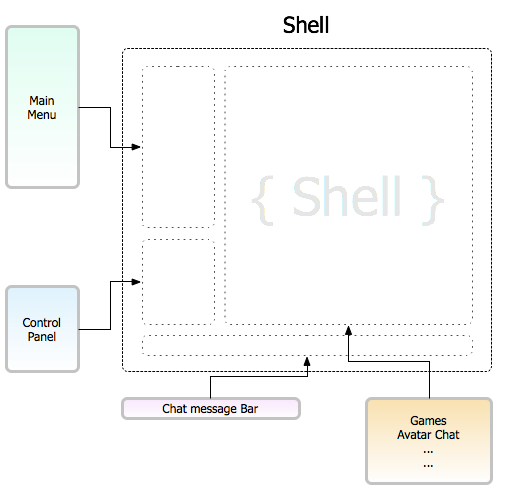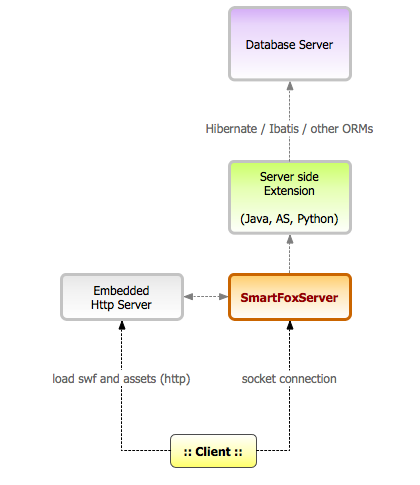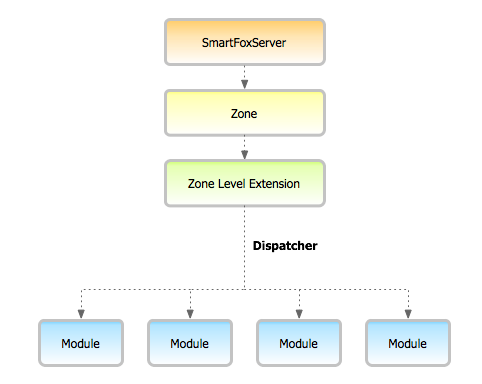
 |
 |
 |
 |
 |
 |
 |
 |
 |
 |
 |
  |
 |
||||||||||||
 |
|
|
|
 |
|
In this article we are going to discuss the architecture of a MMO(*) Virtual World featuring the typical community tools (avatar chat, buddy lists, shop, games, trading tools, etc...) found in applications of this genre. (Habbo Hotel, Mokitown, Club Penguin...)
» A little background 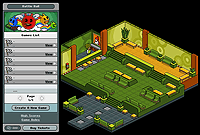  In the past 2-3 years we've seen a conspicuous growth of Flash-based MMO Communities inspired by popular websites like Habbo Hotel, Mokitown and similar virtual worlds. In the early days MMO communities were essentially based on "thick clients" (platform dependent executables, usually for Windows only) that users had to download to their local drives, install and run. At the beginning of 2000 various startups were experimenting with technologies like Java and Shockwave to create similar applications and run them in a browser, making it possible to reach a wider audience and reducing the software dependencies to a single browser plugin. Both MMOGs quickly became extremely popular, with millions of registered users from all over the world. Back in 2001-2002 Flash was rapidly gaining popularity but it was missing the same rendering power of its competitors (those were the days of Flash 5 and Flash MX). Additionally Shockwave had a dedicated server technology provided by Macromedia (Shockwave Multiuser Server) which helped simplifying the development and deployment of online MMOGs. In just a few years things have evolved very quickly and today Flash is the leading platform for any type of browser-based applications and games, including MMOGs. The rendering speed has improved dramatically with the release of version 8 of the Flash Player and the Actionscript 2.0 and 3.0 languages provide a rock-solid platform for building any type of object oriented code. As of today (June 2007) the latest Flash Player (version 9) is available for all 3 major operating systems (Windows, MacOS X and Linux-x86) providing a re-written virtual machine with new features like JIT compiling, support for binary sockets, advanced display programming framework and video support.
» The idea: VirtuaPark In order to illustrate the architecture behind a similar application we will analyze the design of "VirtuaPark", a fictional community-driven MMO with customizable avatars interacting in 3D like environments (isometric), online and offline messaging system, shopping system and various multi-player games where users can challenge each others. One of the crucial requirements for VirtuaPark is extensibility: we would like the project to be open to new features (new modules, games etc...) without major hassles, so that new components can be easily plugged to the existing code base. The application will be 100% browser based, using the latest Flash Player. The following diagram shows how the application modules are organized:
We have defined four main "modules" that will allow the user to access all the available features:
Each module in the application will be responsible for handling one specific task (avatar customization, game, user list etc...) and it will be able to send and receive events from the others. To give you an idea of the communication between modules check this example:
Side Note:
» Shell-based application It is time to dive into the architecture of the MMO and we'll do it (oddly enough) by starting on the client side. In order to make all the application modules work together in a seamless way we need a special module that acts as a glue for all the others. This special module will be called the "Shell" and it is represented in the following diagram:
In order to develop the Shell and its modules you will have a good range of choices since SmartFoxServer supports both Actionscript 2.0 (from Flash 6 to 8) and Actionscript 3.0 (Flash Player 9, using Flash CS3 and Flex Builder 2).
» Server side architecture
Now that we have defined the structure of the client side part, you are probably wondering what is going to happen
on the server side: how will you handle the many possible requests,
how are you going to manage assets, persistence etc...
Starting from low to top we have the client who connects through his browser to our VirtuaPark website.
The website together with all the swf files and other assets can be comfortably handled by the Jetty web server embedded in SmartFoxServer.
The Server Side Extension will handle all the requests coming from each module, avatar chat and games plus it will
access the database server to store and retrieve the user data, application status and whatnot.
Another important aspect of ORM tools is that they provide a layer of abstraction between your application logic and the actual database server, making your Extension code independent from the DB technology. If for any reason you need to migrate from a database technology to another one it will be very simple to perform the switch and your code won't be affected. SmartFoxServer allows developers to easily integrate such tools with both Java extensions and script extensions (Actionscript and Python). If you plan to use the latter you'll be able to directly access all the ORM objects from your scripts without the need of writing additional Java code. To give you an idea of how powerful is the mix of scripting languages (Python in this case) with an ORM like Hibernate here's a snippet of code that shows a simple login method that retrieves a user from the database and access a few of its properties:
Hibernate allows you to query the objects in the database using a SQL-like language called HQL. As you can see instead of writing long SQL statements we just need to specify the criteria for our search. Once the object is retrieved we can access all its fields (including those that are mapped on linked tables) with simple getters and setters.
» The Server Side Extension The Server Extension is the core of the application and probably the most complex part to build. As we have outlined in the previous diagrams we will run VirtuaPark in its own Zone and use a single extension plugged at Zone-level. ( If you're not familiar with the basics of the SmartFoxServer framework we would suggest you to pause the reading and review the articles found at Chapter 4 of our documentation ).
The first problem that we need to face when building the extension is how to organize the many requests that each client side module can send to the server. The following is a visual representation of the solution:
In order for this mechanism to work we need to establish a naming convention between client and server for the request names. As you may remember each Extension message sent and received by the server has a cmd property which identifies the command (request) name. For our VirtuaPark we will be using the following convention: moduleName##requestName where:
Here are a few examples of requests based on the above convention: chat##moveAvatar The following Python code example should clarify the whole process:
We have defined 3 simple classes (ChatModule, ShopModule and GameModule) that represent the chat module, shop module and a game module respectively. Each class has a handleReq method that will be invoked by the main Extension file. In the init() method of our Extension we instantiate all three classes and we add them to a global dictionary called handlersTable. ( A dictionary in Python is the equivalent of an associative array / HashMap ) When a client request is received by the handleRequest() method we will do the following:
If you prefer to use Java for your Extensions you should be able to re-create the same code structure by defining an interface that all module classes will implement.
» Conclusions (Part 1) Now that we have defined the general architecture of both client and server side you can see how the main goal of our VirtuaPark design (extensibility) is successfully achieved. By using a modularized architecture on both sides of the application we will be able to easily add new features and games to the virtual world. The 2nd part of this article will analyze the remaining parts of the puzzle and provide further advices for the development. |
||||||||||||||||||||||||||
|
||||||||||||||||||||||||||
|


 Building MMO Virtual Worlds
Building MMO Virtual Worlds

